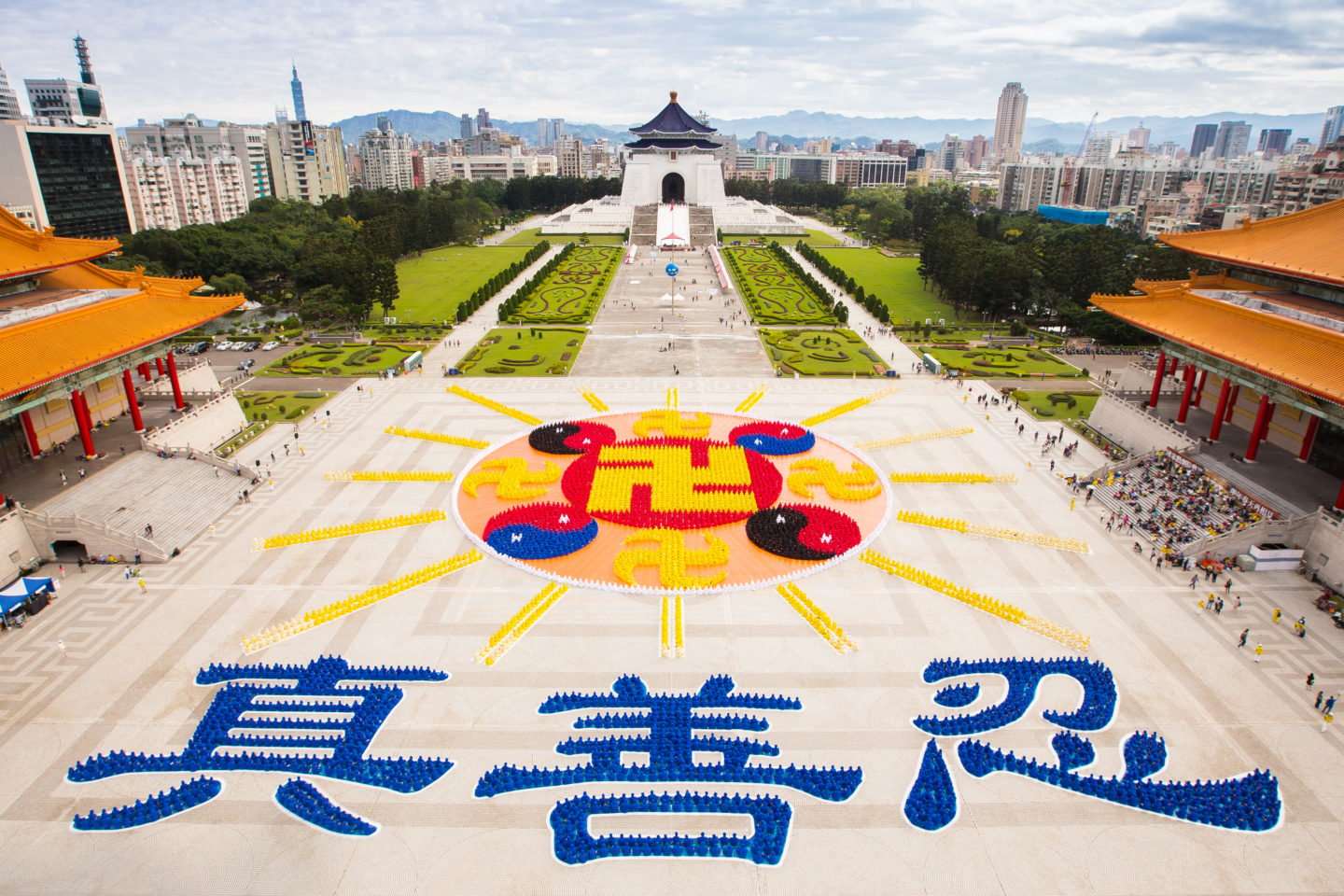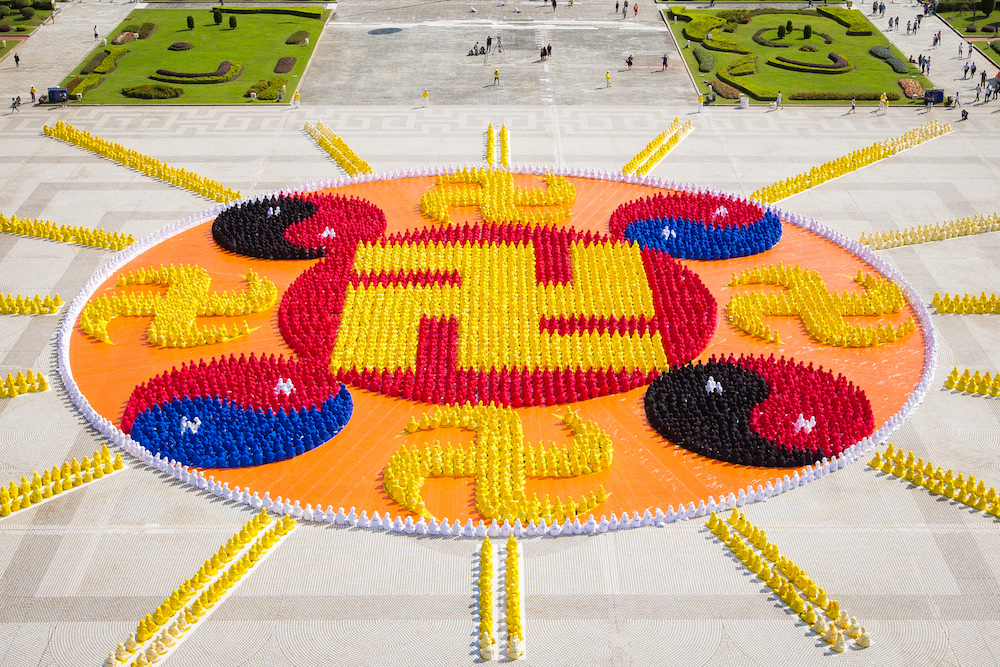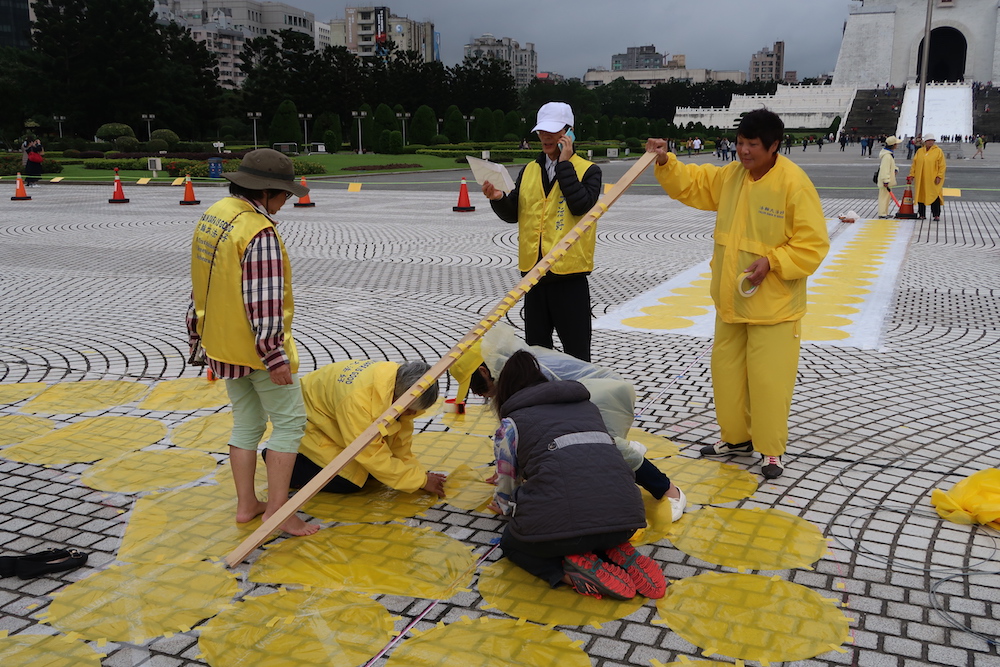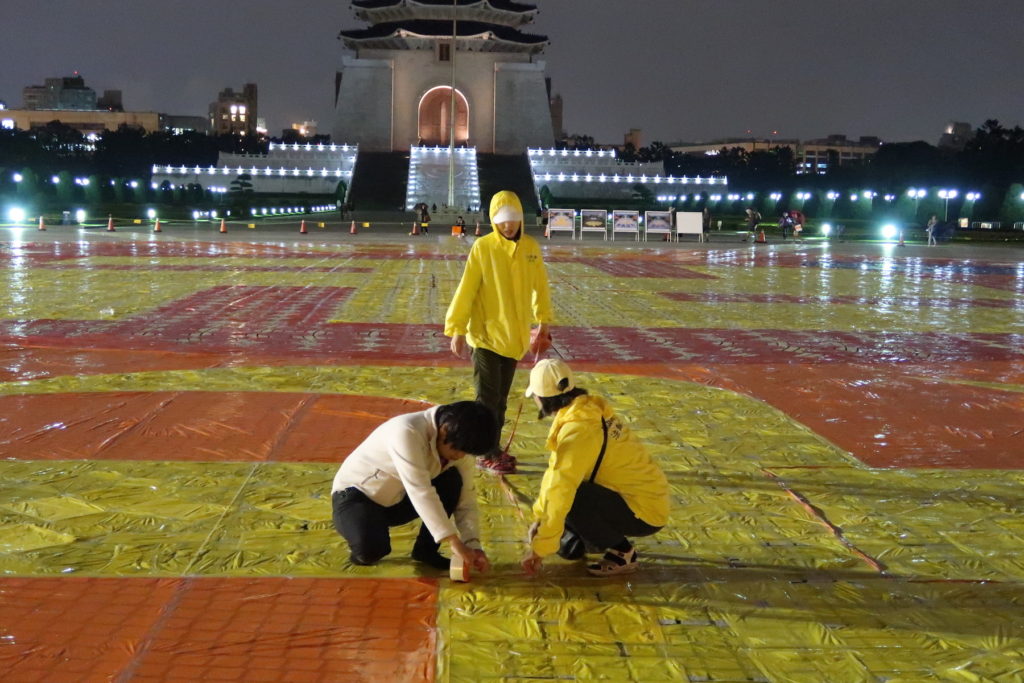
6,000 Practitioners Form Giant Falun Emblem in Taiwan
TAIPEI, Taiwan—After two days of intensive labor and preparation, a huge symbol appeared center stage at Taiwan’s Liberty Square, named for its role in the island’s transition from one-party rule to democracy.

On Nov. 26, wearing yellow, blue, red, white and black clothing, about 6,300 practitioners of the spiritual discipline Falun Gong formed a large emblem along with the three Chinese characters for truthfulness, compassion, and tolerance, the core teaching of Falun Gong. The symbol, called “falun” in Chinese and meaning “law wheel,” includes the traditional Buddhist “srivatsa” and Taoist “taiji.” It is the emblem of Falun Gong, also known as Falun Dafa (Great Way of the Law Wheel).
The participants, mostly Falun Dafa practitioners living in Taiwan, included practitioners from Japan, South Korea, Hong Kong, Vietnam, Singapore, and Indonesia. The character formation has become an annual tradition, held in November, to commemorate the month back in 1997 when Mr. Li Hongzhi, the founder of Falun Gong, visited the island for the first time.
“The world needs truthfulness, compassion, and tolerance.” said Huang Chun-mei, organizer of the activity and deputy chairman of Taiwan Falun Dafa Association. “If everyone in society follows these principles, our society will be better.”
The character formation, however, bears a much deeper meaning. Huang Chun-mei explained that the character formation would put a check on the continued violent persecution of Falun Gong practitioners in China, and, contrary to propaganda by the Chinese regime, show that the Buddhist discipline thrives around the world, with people practicing Falun Gong in over 100 countries.

From Design to Formation
The planning and design actually began over two months ago, said Wu Ching-hsiang, a retired architect, who has been responsible for drawing the blueprints for Taiwan’s character formations since 2009. He has also provided drawings for similar activities held in Washington D.C and New York.
Wu explained in a phone interview why getting the blueprint right was such a lengthy process: “Once, after I finished a drawing and was suddenly told that there would be 1,000 additional participants, I had to quickly redraw the blueprint.”
Wu added that the history of character formation actually originated in China. But unlike those held in China and elsewhere in the world, the formation in Taiwan often involves more complex images.
“Geometric shapes involving straight lines or 90-degree angles are not difficult,” said Wu. “It is images with curved lines that are more challenging.” To provide an example, Wu added that participants form the more complicated, but beautiful Chinese characters in clerical script, a form of Chinese calligraphy nowadays, as opposed to the more simple writing style in the past.
In China, such large-scale character formations were common in China before July 1999, before the persecution started. Since then, practitioners in Taiwan, the United States, and many other countries have tried to keep the tradition alive.
Wu said that in the formation this year, besides the emblem and the Chinese characters, there are also rays of light depicted in yellow. These rays, according to Wu, represent Buddha’s grace illuminating the world.

Preparation
Two days before the formation of the characters, preparation at the Liberty Square begins. Hundreds of practitioners, mostly from Taipei, turn out to manually place colored round plastic sheets and tape them to their designated spots.
Wang Chung-tung, 66, a retired ocean freight captain and former assistant professor at Taipei College of Maritime Technology, said over the years he had previously battled through adverse weather, red ants, and even snakes during the preparation, as the formations were sometimes held on grass instead of concrete.
Opportunity Only in Taiwan
For many practitioners in other Asian countries, to take part in the character formation in Taiwan was an opportunity not to be missed.
“Falun Gong is welcomed everywhere in the world except China,” said Sato Kunio, 53, a hotel owner in the Japanese city of Chiba, who was born in Harbin, China before moving to Japan in 1980. He started practicing Falun Gong in 1996 and has participated in Taiwan’s character formation several times.
For Rosy Nguyen, 34, senior account manager from Vietnam who started practicing Falun Gong in 2012, the opportunity was precious, given that it was impossible to hold a large-scale activity like this in her own country due to political pressure from China.
Nguyen explained, “The Vietnamese government does not oppose Falun Gong, but it does not want to make the Chinese government upset either.”
